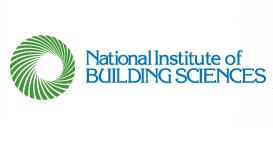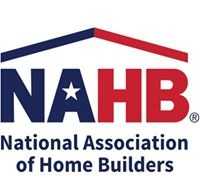Consultative Council Releases Report at Building Innovation 2018
WASHINGTON – (RealEstateRama) — Monday, January 8, the National Institute of Building Sciences Consultative Council released its 2017 report, Moving Forward: Findings and Recommendations from the Consultative Council, during its Annual Meeting, held as part of Building Innovation 2018: The National Institute of Building Sciences Sixth Annual Conference and Expo.

The Consultative Council brings together representatives from leading organizations that represent all aspects of design, construction, operation and regulation to examine important issues before the industry. Each year, the Council develops a Moving Forward Report to examine some of these challenges and offer findings and recommendations on how to overcome them. The summarized report becomes part of the Institute’s Annual Report, which goes to the President of the United States and the U.S. Congress.
In 2017, members of the Consultative Council decided to focus on the future. They wanted to explore how the building industry can and should evolve to meet the changing needs of society and how new technologies and practices can attract a 21st century workforce. Buildings and infrastructure serve as important resources that enable progress. Buildings provide businesses and communities with the facilities necessary to achieve their missions, and individuals with housing that is comfortable, safe and efficient. However, one question arises as the pace of technology and commerce accelerates and communities face new challenges of resilience and sustainability: Will the building industry be ready?
The Council focused on four areas to help facilitate progress:
Design, Construction and Operations
The building industry saw significant advances in the latter half of the 20th century, with an increased focus on life safety through building codes and other guidance; the development and deployment of tools such as computer assisted/aided design (CAD) and building information modeling (BIM) to support increasingly efficient design and construction processes; sustainability through green building rating programs; and building science knowledge around building enclosures, indoor environmental quality, and energy and water efficiency. Additional evaluation around project delivery and the contracting process; allocation of design fees; policies, codes and standards; and off-site construction need action.
Technology
Meanwhile, the development and deployment of new and enhanced technologies, whether specifically for use by the building industry or in general, has grown significantly. Emerging technologies to be advanced include: sensors, controls and the Internet of Things; cybersecurity; virtual and augmented reality, drones and additive manufacturing; and robotics and human augmentation.
Workforce
The changing design, construction and operations processes, coupled with advancements in building-related technologies, make this an exciting time to enter the building industry, particularly when the availability of a future workforce is such a big industry concern. The concerns encompass two main areas: workforce shortages (the lack of workers available to do jobs in the industry) and the workforce skills gap (where employers in large parts of the industry struggle to find workers who are keeping up with technology and code advances).
Research
To continually improve, the building industry must focus on research and development (R&D). Unfortunately, because of the disciplinary-focused nature of the industry and the small size of most companies, there has been limited investment in R&D aimed at moving the entire industry forward. Many governments around the world, recognizing the invaluable role the built environment plays in their economy and the opportunity to support all segments of the economy through improved buildings and infrastructure, have established building industry research and development programs for their countries. Without a commensurate level of investment, the United States risks falling behind other nations—not just in buildings but across the economy.
The Consultative Council offers 10 recommendations in the report, among them:
- The White House should establish a cross-agency program that focuses on providing scientific and economic data associated with the effectiveness of building codes and their impacts on communities; education and training for code professionals; technical assistance; and evaluation tools for code department effectiveness.
- The building industry, with involvement of representatives from the legal, finance and insurance sectors, should conduct a dialogue on how to evolve the current state of fees, timelines and risk in furtherance of a systems-based approach to realize actual, measured performance results.
- The codes and standards development community should work collaboratively to develop protocols and best practices that support the utilization of current and future standards within digital environments, including BIM, additive manufacturing, building automation and robotics.
- The building industry along with federal agencies should develop and fund a national high-performance building research and development strategy that reflects the value of the industry to the U.S. economy, mirroring the 2.7 percent economy-wide investment in R&D.
As highlighted in the 2017 Moving Forward Report, both the public and private sectors in the United States can take a number of steps to address the challenges. Through the Consultative Council and other cross-industry groups, the building industry stands ready to create actionable policies and practices that support improving the building industry.
















